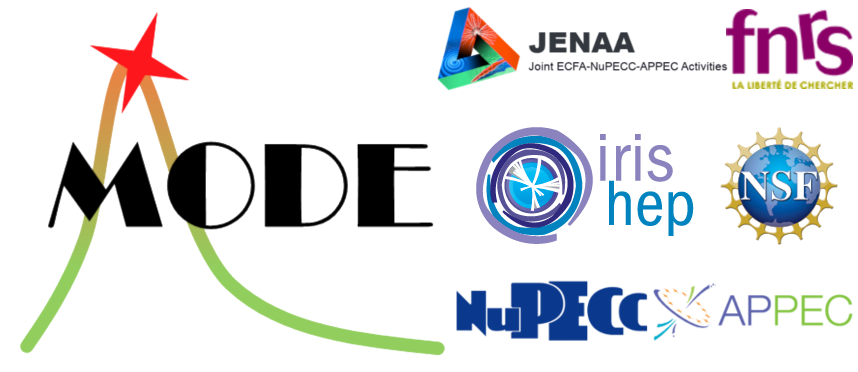Conveners
Applications in Astro-HEP and Neutrino Physics
- Christian Haack (ECAP, FAU Erlangen)
- Christian Glaser (Uppsala University)
Applications in Astro-HEP and Neutrino Physics
- Christian Haack (ECAP, FAU Erlangen)
- Christian Glaser (Uppsala University)
Applications in Astro-HEP and Neutrino Physics
- Christian Haack (ECAP, FAU Erlangen)
- Christian Glaser (Uppsala University)
Applications in Astro-HEP and Neutrino Physics
- Christian Haack (ECAP, FAU Erlangen)
- Christian Glaser (Uppsala University)
Since its completion more than a decade ago, IceCube has discovered the diffuse astrophysical neutrino flux and begun to identify galactic and extragalactic neutrino emission. Despite this initial success, there are still opportunities in neutrino astronomy. In particular, understanding the diffuse flux's high-energy behavior and tau neutrino fraction are of interest. The Tau Air-Shower,...
Next-generation monolithic Water Cherenkov detectors aim to probe fundamental questions in neutrino physics. These measurements demand unprecedented precision in detector calibration and event reconstruction, pushing beyond the capabilities of traditional techniques. We present a novel framework for differentiable simulation of Water Cherenkov detectors that enables end-to-end optimization...
P-ONE is a planned cubic-kilometer-scale neutrino detector in the Pacific ocean. It will measure high-energy astrophysical neutrinos to help characterize the nature of astrophysical accelerators. Using existing deep-sea infrastructure provided by Ocean Networks Canada (ONC), P-ONE will instrument the ocean with optical modules - which host PMTs as well as readout electronics - deployed on...
In-ice radio detection of neutrinos is a rapidly growing field and a promising technique for discovering the predicted but yet unobserved ultra-high-energy astrophysical neutrino flux. With the ongoing construction of the Radio Neutrino Observatory in Greenland (RNO-G) and the planned radio extension of IceCube-Gen2, we have a unique opportunity to improve the detector design now and...
Recent advances in optimization techniques have opened up a promising path towards computationally exploring the vast design space of new gravitational wave detectors. Formulating a highly expressive, continuous search space of potential topologies, defining a clear objective function and evaluating detector candidates with an interferometer simulator allow for computational methods to...
Objective:
Proton therapy is an emerging approach in cancer treatment. A key challenge is improving the accuracy of Bragg-peak position calculations, which requires more precise relative stopping power (RSP) measurements. Proton computed tomography (pCT) is a promising technique, as it enables imaging under conditions identical to treatment by using the same irradiation device and hadron...
The point spread function (PSF) of an imaging system is the system's response to a point source. To encode additional information in microscopy images, we employ PSF engineering – namely, a physical modification of the standard PSF of the microscope by additional optical elements that perform wavefront shaping. In this talk I will describe how this method enables unprecedented capabilities in...
This work highlights the experimental framework employed to implement and validate Deep Deterministic Policy Gradient (DDPG) for controlling a Fabry-Perot (FP) optical cavity, a key component in interferometric gravitational-wave detectors. An initial focus is placed on the real-world setup characterisation, where high finesse values and mirror velocities introduce significant...
The integration of artificial intelligence (AI) into scientific research is reshaping discovery across disciplines—from protein folding and materials design to theorem proving. These advances mark AI’s evolution from a computational tool to an active participant in scientific exploration.
Quantum physics represents a particularly promising frontier for AI-driven discovery. As we push deeper...
